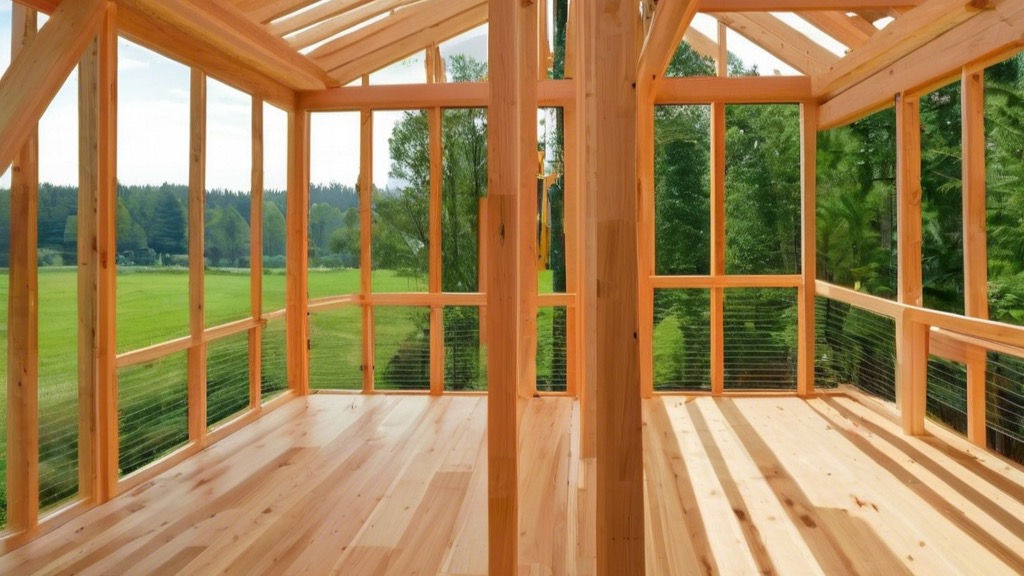Exploring Sustainable Building Practices for Modern Custom Homes: What You Need to Know
- Boston Campbell
- Mar 13
- 4 min read
In today's world, where the impact of climate change is more evident than ever, sustainable building practices have become essential in the construction of modern custom homes. Homeowners are increasingly motivated to lower their carbon footprints while creating stylish and functional living spaces. This blog post will explore effective sustainable building practices, offering insights into materials, design, and energy efficiency that can help you create a contemporary custom home that is both beautiful and environmentally responsible.
Understanding Sustainable Building
Sustainable building involves creating structures that are environment-friendly and resource-efficient during their entire life cycle. This life cycle spans planning, design, construction, operation, maintenance, renovation, and demolition. By prioritizing sustainability, homeowners not only protect the environment but also enjoy substantial long-term savings. In fact, homes built with sustainable practices can save homeowners up to 30% on energy bills annually.
A critical principle of sustainable building is using renewable resources while minimizing waste. Choosing materials, energy sources, and designs wisely ensures minimal environmental impact while maximizing comfort and efficiency.
Choosing Eco-friendly Materials
The materials selected for construction significantly influence sustainability. Picking eco-friendly materials can greatly reduce your home's carbon footprint. Here are three powerful options:
Bamboo: This fast-growing plant can reach maturity in three to five years. Unlike timber, which can take decades to grow, bamboo sequesters a substantial amount of carbon. It is an excellent option for flooring, cabinetry, and structural elements.
Reclaimed Wood: Using reclaimed wood can cut down on the demand for new lumber, preserving forests. This type of wood, sourced from old buildings, sneakily enhances a home’s character while being environmentally friendly. A study shows that using reclaimed wood can reduce carbon emissions by up to 40%.
Recycled Metal: Steel and aluminum can be recycled repeatedly without losing their strength. Utilizing recycled metals for roofing, siding, and framing boosts durability—perfect for ensuring your home stands the test of time.

Enhancing Energy Efficiency
Energy efficiency is a core goal of sustainable building practices. Here are some effective strategies:
Passive Solar Design: Orienting your home to maximize natural light and warmth from the sun can cut energy consumption significantly. Large south-facing windows paired with thermal mass materials, like concrete or stone, can help keep indoor temperatures comfortable without relying heavily on heating or cooling systems.
High-Performance Insulation: Choosing insulation made from recycled materials can prevent heat from escaping your home, allowing it to stay warm in winter and cool in summer. The U.S. Department of Energy states that proper insulation can reduce heating and cooling costs by 10-50%.
Energy-Efficient Systems: Opting for energy-efficient appliances, like ENERGY STAR-rated products, can lead to a reduction in energy consumption by about 15-30%. Smart home technology enables you to manage these systems efficiently, leading to additional savings on your energy bills.

Water Conservation Techniques
Water conservation is crucial in sustainable building. With many regions experiencing water shortages, implementing efficient water management techniques is increasingly important. Consider these methods:
Rainwater Harvesting: By installing systems to collect rainwater for irrigation, you can cut water usage by up to 50%. Barrels and cisterns can capture rainfall for later use, benefiting both your garden and your water bill.
Low-Flow Fixtures: Fitting low-flow toilets, faucets, and showerheads can reduce daily water usage by 20-60%, conserving resources while maintaining comfort.
Xeriscaping: This landscaping method reduces the need for additional watering. With drought-resistant plants, many homeowners can maintain beautiful gardens while significantly lowering water usage.
Design Considerations
Smart design can dramatically improve a home’s sustainability. Here are key elements to think about when building modern custom homes:
Orientation: Positioning your home to capture natural light and beneficial winds can decrease reliance on heating and cooling systems. Strategic orientation enhances both energy efficiency and the home's aesthetic appeal.
Natural Ventilation: Thoughtfully located windows can allow fresh air to flow naturally through your home. This can reduce the need for artificial cooling, keeping energy costs down.
Flexible Spaces: Creating adaptable spaces that can serve multiple purposes helps future-proof your home. This adaptability reduces the need for future expansions, saving both resources and money.
Investing in Sustainable Technology
Innovation in technology plays a vital role in sustainable building. Here are some options that can demonstrate real value:
Smart Home Technology: Devices like smart thermostats and lighting systems enable homeowners to monitor and adjust energy use effectively. Studies show that smart technology can reduce energy consumption by 10-20%, translating into significant savings.
Solar Panel Systems: Installing solar panels not only allows homeowners to harness renewable energy but can also lead to eliminating electricity bills. Many homeowners experience an average return on investment of 20% per year from solar installations, especially with available incentives.
Energy Storage Solutions: Battery systems can store excess energy generated by solar setups for later use, maximizing energy efficiency and resilience, especially during peak hours or outages.

Embracing Sustainability
Adopting sustainable building practices is not just a trend; it is essential for a healthier future. By understanding the different pillars of sustainable construction—from materials to design and technology—homeowners can craft custom homes that are not only beautiful and functional but also environmentally friendly. Incorporating these practices leads to lower bills, enhanced quality of life, and the opportunity to positively impact the planet. Embracing sustainability in your modern custom home is truly a rewarding investment for both you and future generations.




Comments